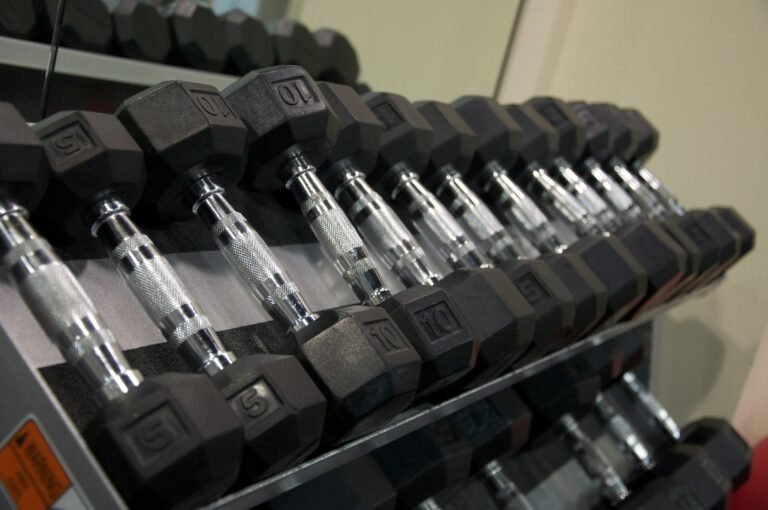Enhance your fitness routine with ankle and wrist weights to boost resistance and maximize your workout results.
Ankle and wrist weights are versatile fitness tools designed to enhance your workout by adding resistance, thereby increasing the intensity and effectiveness of your exercises. These weights are perfect for individuals looking to maximize their training efforts, whether at home or the gym.
Incorporating ankle and wrist weights into your exercise routine can significantly improve muscle strength, endurance, and overall fitness levels. Understanding how to effectively use these tools can help you achieve your fitness goals more efficiently.
This article will explore the benefits of ankle and wrist weights, discuss different types available, guide you in selecting the right pair for your needs, and provide tips on their usage and maintenance. Let’s dive into how these simple yet effective tools can transform your workout routine.
Understanding Ankle and Wrist Weights
Ankle and wrist weights are small, weighted bands that can be strapped around your ankles or wrists to add extra resistance to your movements during exercise. This added weight helps in intensifying workouts and can lead to better muscle engagement and calorie burn.
- They are versatile and can be used in various exercises, from walking and running to strength training and aerobics.
- Real-world example: Athletes often use them to enhance their performance by building endurance and strength.
- Studies show that incorporating weights in workouts can improve cardiovascular health and muscle tone.
Key Features and Capabilities
Ankle and wrist weights come with various features that cater to different fitness levels and workout needs. Understanding these features can help you choose the best option for your workouts.
- Adjustable weights allow for customization according to the user’s strength and endurance levels.
- Comfortable and durable materials ensure they can withstand rigorous workout routines.
- Some models offer moisture-wicking fabric to keep you dry during intense sessions.
Comparing Different Types of Ankle and Wrist Weights
Choosing the right type of ankle and wrist weights depends on your specific fitness goals and the types of exercises you plan to do. Here’s a comparison to help guide your decision.
| Feature/Type | Benefits | Best For | Considerations |
|---|---|---|---|
| Adjustable Weights | Customizable weight levels | Progressive training | May be bulkier |
| Fixed Weights | Simple to use | Beginners | Limited resistance options |
| Weighted Bracelets | Compact and stylish | Everyday wear | Lower weight capacity |
How to Choose the Right Weights for Your Workouts
Selecting the right ankle and wrist weights involves considering your fitness goals, current fitness level, and the types of exercises you plan to perform. Here’s a step-by-step guide to help you make an informed choice.
- Determine your fitness goals, whether it’s strength building, endurance, or weight loss.
- Consider your current fitness level to choose an appropriate starting weight.
- Test different weights to see which feels comfortable and effective during your workouts.
Using Ankle and Wrist Weights Effectively
To maximize the benefits of ankle and wrist weights, it’s crucial to use them correctly. Here are some tips and techniques for effective use.
- Start with lighter weights to avoid strain and gradually increase as you build strength.
- Focus on maintaining proper form to prevent injuries and ensure effective workouts.
- Incorporate them into a variety of exercises like walking, jogging, or strength training for balanced fitness.
Caring for Your Ankle and Wrist Weights
Proper care and maintenance of your weights can extend their lifespan and ensure they remain effective. Here are some care tips.
- Regularly clean them with a damp cloth to remove sweat and dirt.
- Store them in a cool, dry place to prevent material degradation.
- Inspect for wear and tear to ensure safety during use.
Expert Tips and Recommendations
- Begin with short sessions using ankle and wrist weights to gauge your body’s response and adjust accordingly.
- Incorporate exercises that engage multiple muscle groups for a comprehensive workout.
- Opt for adjustable weights to gradually increase resistance as you progress in your fitness journey.
- Look for sales or discounts to purchase high-quality weights without breaking the bank.
Common Questions About Ankle and Wrist Weights: Add Resistance to Your Workouts
Find answers to frequently asked questions about using ankle and wrist weights effectively.
- Q: Can ankle and wrist weights improve my running performance?
A: Yes, they can enhance leg strength and endurance, but should be used cautiously to avoid injury. - Q: Are wrist weights safe for all exercises?
A: While they are versatile, avoid using them in exercises that could strain the wrists or joints. - Q: How can I integrate weights into my daily routine?
A: Wear them during walks or household chores for added resistance and calorie burn. - Q: Do ankle weights help with toning legs?
A: Yes, they can increase resistance in leg exercises, aiding in muscle toning and strength. - Q: What weight should beginners start with?
A: Beginners should start with 1-2 pounds and gradually increase as they build strength and endurance.
Conclusion
Ankle and wrist weights are valuable tools for enhancing workout intensity and achieving fitness goals. They offer versatility and can be easily integrated into various exercises.
By choosing the right weights and using them effectively, you can experience improved strength, endurance, and overall fitness. Start incorporating them into your routine today for a more challenging and rewarding workout experience.
Ready to maximize your workout results with ankle and wrist weights? Check out these Ankle Weights to start your journey to enhanced fitness:
As an Amazon Associate I earn from qualifying purchases.
Check out this related post: Jump Ropes: Cardio and Conditioning on the Go
Explore this topic: Ankle Weights
Plan your layout in Planner 5D
This article contains affiliate links. If you make a purchase, we may earn a commission at no extra cost to you.
Last updated on August 12, 2025






